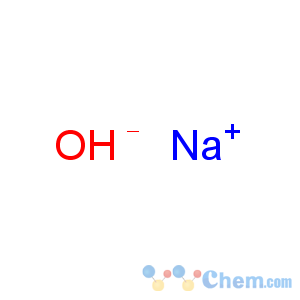Sodium hydroxide
-

Molecular Structure
Detailed Description
Sodium hydroxide CAS 1310-73-2 is a white crystalline odorless solid that absorbs moisture from the air. It is a manufactured substance. When dissolved in water or neutralized with acid it liberates substantial heat, which may be sufficient to ignite combustible materials. Sodium hydroxide is very corrosive. It is generally used as a solid or a 50% solution. Other common names include caustic soda and lye. Sodium hydroxide is used to manufacture soaps, rayon, paper, explosives, dyestuffs, and petroleum products. It is also used in processing cotton fabric, laundering and bleaching, metal cleaning and processing, oxide coating, electroplating, and electrolytic extracting. It is commonly present in commercial drain and oven cleaners.
Sodium hydroxide CAS 1310-73-2 is also known as lye or soda , or caustic soda. At room temperature, sodium hydroxide is a white crystalline odorless solid that absorbs moisture from the air. It is a synthetically manufactured substance. When dissolved in water or neutralized with acid it releases substantial amounts of heat, which may prove sufficient to ignite combustible materials. Sodium hydroxide is highly corrosive. Sodium hydroxide is generally used as a solid or a diluted in a 50% solution. This chemical is used to manufacture soaps, rayon, paper, explosives, dyestuffs, and petroleum products. It is also used in processing cotton fabric, laundering and bleaching, metal cleaning and processing, oxide coating, electroplating, and electrolytic extracting. It is commonly found in commercial drain/ oven cleaners. According to the the FDA, sodium hydroxide is considered a direct food recognized as safe, where it serves as a pH control agent and follows good manufacturing guidelines. Interestingly, sodium hydroxide has been studied for its use in the treatment of prion disease (as occurs in mad cow disease and kuru). The use of this compound has been shown to effectively reduce prion levels in an in vitro inactivation assay.



